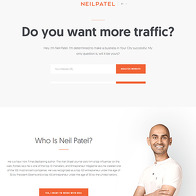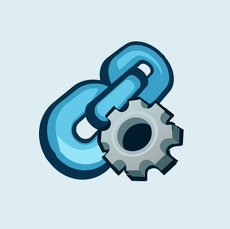Show 24+ sites like WooRank:
WooRank
woorank.com
You should know WooRank already. They’re one of the greatest SEO audit and analysis tools. They analyze everything and report on data you didn’t even know you had. They dive deep into your site, measure all of your performance and analyze all of your content. Then, they crunch the numbers behind the scenes and provide you with extremely detailed reports on your site’s overall performance along with direct instructions on how to get rid of any bottlenecks. Their entire process is automated. You’re not paying for a service here, but you’re paying for the WooRank product. This tool embeds itself into your site and gives you constant and uninterrupted access to your performance metrics.
Their main focus is, of course, SEO, across the board. They go a lot further than keyword analysis. They dive deep into every nook and cranny of your site's written content, across all of your pages. You can see the rankings, performance and general optimization of every part of your site. Now, as a porn webmaster, you’re probably running a lot of visual content, so you might think that SEO should take a backseat to say, content delivery.
Well, that’s not a bad way to think about it, sure. But, without proper SEO, you’ll pretty much get knocked down by your competitors every step of the way. This is especially likely to happen if you’re involved in delivering expensive niche content and you’ve actually managed to float to the top page of a search engine. So, without further ado, let’s see how WooRank can help keep you on top.
Search Engine Audit
Internal SEO audits function more or less identically to how search engines actually audit your content. That’s the whole point. WooRank crawls across your site, as meticulously as possible, going way out of its way to find the kinks and report them back to you, long before you’ve exposed your site to the internet. They’re basically giving you the same treatment that Google would, but for your benefit. Google isn’t going to mail you a report as to why you’re the 265th result for your niche, even though you have an ultra-specific name that pertains to that fetish. Google doesn’t care about your bottom line. WooRank, on the other hand, will bend over backwards, finding every opportunity for SEO optimization.
You might be thinking to yourself: My website doesn’t need optimization. I built it myself and I happen to know for a fact that I did everything correctly. Nah, fam. That’s not how that works. Search engines don’t just analyze the general quality of your site and the performance. They compare it against other websites in a brutal and competitive way. It’s not their fault. Your competitors are doing hard work to stay on top and so should you. That’s why 99% won’t do it. You want to optimize everything you can. And, if a section of your site is underperforming and bogging your site down, get rid of it. It’s not worth it. I mean, consider improving it first, but if it’s just not working, fuck it.
Tons of Tools
SEO has never been a singular process. There has always been a need for multiple tools working in tandem to analyze and improve different types of content and activity on your site and WooRank knows this well. That’s why a subscription nets you access to a multitude of tools that cover the spread. You only get one website on the cheapest tier and we’ll go into the differences later, but the bottom line is, you get all the tools regardless. This is because none of the tools are optional. So, from the top, here are all the tools:
Keyword Research
This is your standard go-to, especially when you’re first starting out. It’s also imperative that you do keyword research daily in case you’re running any kind of blog. There’s a myriad of search terms for every blog post that could apply and usually, there’s one main keyword that you’re trying hard to target directly. Keyword research is usually a two-part process. You’re either looking for keyword ideas to pursue within the industry or niche that your site revolves around. So, you’re growing a list of relevant keywords and planning to write blog posts about them or, at the very least, target them across your site’s content.
The other part of keyword research is the optimization that comes in after the fact. Whether you’re going back to your old blog posts to give them a touch-up or you’re checking your non-textual pages for some optimization potential, you have to reassess your data. Even things like video titles and descriptions factor in here. People’s individual comments are usually pointless, since Google can tell the difference between your site’s content and shit that other people have submitted, but either way, WooRank has you covered. You’ll get a complete rundown of all your relevant keywords and how they’re performing.
Google Analytics
WooRank themselves recommend that you use Google Analytics for all of your data, which doesn’t surprise me. They’re not too lazy to develop their own system – they know there’s no need for that. Google Analytics is an incredible holistic analysis tool that couples really well with WooRank and provides you with in-depth reports that are, for the most part, very visual. They’re broken down in such a way that you always find what you’re looking for quickly. Whether you have problematic pages or bandwidth bottlenecks, these metrics will eventually come up when you’re checking your analytics.
It’s suggested that you keep an eye out for elements on your site that damage your bounce rate. Just for your information, the bounce rate should be as low as possible. You want people to stick around on your site. The longer, the better. It’s still unclear whether Google actually uses your bounce rate to determine how high you rank among search results. They have said in the past that they do not care, but I remain skeptical. Bounce rates matter a lot, regardless.
Beyond that, you’ll want to keep an eye out for organic search traffic and the external links that lead back to your site. You also have to keep mobile devices in mind. Browsing is different on phones; what can I say? WooRank’s analysis can also help immensely in showing you where mobile users might have problems with navigating your site.
PDF Reports
I don’t find the reports to be that impressive – they’re an expected part of any SEO audit tool. But, WooRank seems to be very proud of what they’ve accomplished and they have an entire section boasting about the formatting and structure of their PDF reports. I’ll admit, they look very useful. They come with a ton of competitor information and some analyses of social media analytics. You get all the information you need, neatly organized and colored for convenience.
This is probably a far more useful feature for webmasters who are running a site for someone else. If you’re a middle-man for a client who’s investing in a website that you’re running, these reports are a godsend. You can straight up automatically generate a report and mail it out. Hell, send it over fax for all I care. This is a professional solution for clients who can’t be bothered to go through the tools themselves. If they want an end-of-cycle report, they’re going to get one and it’s going to be very colorful.
Some Miscellaneous Tricks
I mentioned that WooRank analyzes your site for bottlenecks. Well, they do this by looking for site errors. Whenever they run into anything on your site that seems broken, unoptimized or even out of convention, they let you know. This can include stuff like missing icons, poor links, sizing issues and so many other little tidbits that you can’t be expected to know about.
You can also learn a lot about your site’s security and the redirects you’ve got across all of your pages. They even go as far as to let you know if you’ve got any duplicate data. Now, normally, duplicate data doesn’t just happen on its own, but I’ve seen a ton of cases where entire pages get posted multiple times during migration or any kind of large scale site reformatting. WooRank will catch this kind of shit instantly. Finally, they boast that they see indexing errors, which is great because those can really affect your SEO scores in the long run.
The Tiers
It’s simple. You get the pro plan for $470 a year. The premium is $1,430 and the enterprise-level tier is literally only available as a custom order. The pro plan is all you need if you’ve only got one website up and running. You get one project with up to 50 keywords and a hard limit of 2500 pages. That’s more than enough to cover any budding webmaster project.
Beyond that, the premium plan bumps you up to 5 websites, 250 keywords, 10,000 pages and it also comes with unlimited white-label PDF reports. The enterprise tier has a ton of additional goodies that I don’t honestly think you need, but you can check it out if you’re planning to scale way beyond just a couple of porn sites.
PornDude likes WooRank's
- Tons of tools
- Automated analysis and optimization
- Increases growth potential
- Integrates with other tools
PornDude hates WooRank's
- Very pricey
woorank.com
 Find a better SEO tool than WOORANK.COM on PornWebmasters!
Find a better SEO tool than WOORANK.COM on PornWebmasters! 
























































































































